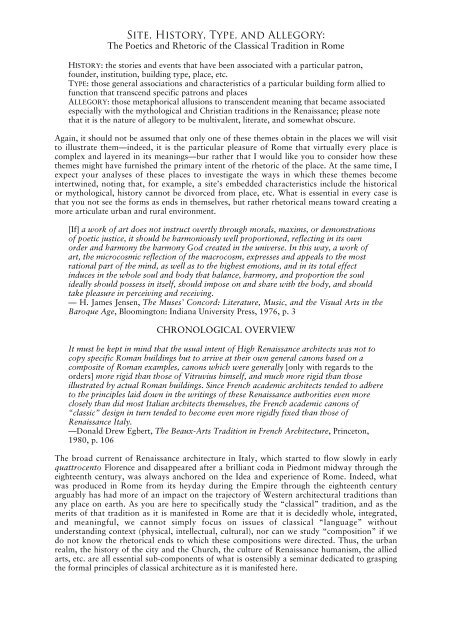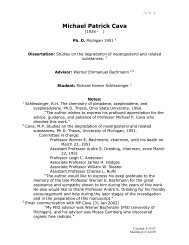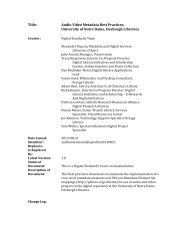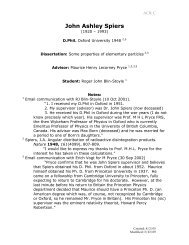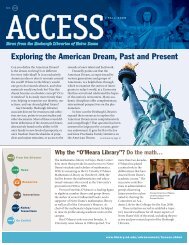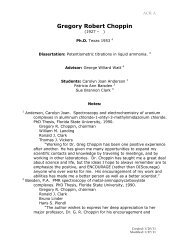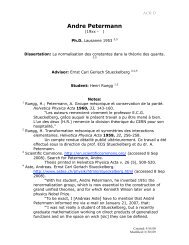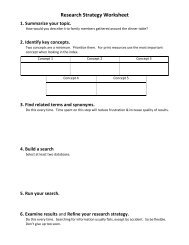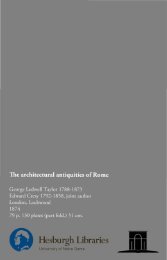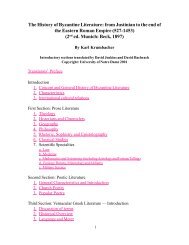ARCH 84312
ARCH 84312
ARCH 84312
You also want an ePaper? Increase the reach of your titles
YUMPU automatically turns print PDFs into web optimized ePapers that Google loves.
Site, History, Type, and Allegory:<br />
The Poetics and Rhetoric of the Classical Tradition in Rome<br />
HISTORY: the stories and events that have been associated with a particular patron,<br />
founder, institution, building type, place, etc.<br />
TYPE: those general associations and characteristics of a particular building form allied to<br />
function that transcend specific patrons and places<br />
ALLEGORY: those metaphorical allusions to transcendent meaning that became associated<br />
especially with the mythological and Christian traditions in the Renaissance; please note<br />
that it is the nature of allegory to be multivalent, literate, and somewhat obscure.<br />
Again, it should not be assumed that only one of these themes obtain in the places we will visit<br />
to illustrate them—indeed, it is the particular pleasure of Rome that virtually every place is<br />
complex and layered in its meanings—bur rather that I would like you to consider how these<br />
themes might have furnished the primary intent of the rhetoric of the place. At the same time, I<br />
expect your analyses of these places to investigate the ways in which these themes become<br />
intertwined, noting that, for example, a site’s embedded characteristics include the historical<br />
or mythological, history cannot be divorced from place, etc. What is essential in every case is<br />
that you not see the forms as ends in themselves, but rather rhetorical means toward creating a<br />
more articulate urban and rural environment.<br />
[If] a work of art does not instruct overtly through morals, maxims, or demonstrations<br />
of poetic justice, it should be harmoniously well proportioned, reflecting in its own<br />
order and harmony the harmony God created in the universe. In this way, a work of<br />
art, the microcosmic reflection of the macrocosm, expresses and appeals to the most<br />
rational part of the mind, as well as to the highest emotions, and in its total effect<br />
induces in the whole soul and body that balance, harmony, and proportion the soul<br />
ideally should possess in itself, should impose on and share with the body, and should<br />
take pleasure in perceiving and receiving.<br />
— H. James Jensen, The Muses’ Concord: Literature, Music, and the Visual Arts in the<br />
Baroque Age, Bloomington: Indiana University Press, 1976, p. 3<br />
CHRONOLOGICAL OVERVIEW<br />
It must be kept in mind that the usual intent of High Renaissance architects was not to<br />
copy specific Roman buildings but to arrive at their own general canons based on a<br />
composite of Roman examples, canons which were generally [only with regards to the<br />
orders] more rigid than those of Vitruvius himself, and much more rigid than those<br />
illustrated by actual Roman buildings. Since French academic architects tended to adhere<br />
to the principles laid down in the writings of these Renaissance authorities even more<br />
closely than did most Italian architects themselves, the French academic canons of<br />
“classic” design in turn tended to become even more rigidly fixed than those of<br />
Renaissance Italy.<br />
—Donald Drew Egbert, The Beaux-Arts Tradition in French Architecture, Princeton,<br />
1980, p. 106<br />
The broad current of Renaissance architecture in Italy, which started to flow slowly in early<br />
quattrocento Florence and disappeared after a brilliant coda in Piedmont midway through the<br />
eighteenth century, was always anchored on the Idea and experience of Rome. Indeed, what<br />
was produced in Rome from its heyday during the Empire through the eighteenth century<br />
arguably has had more of an impact on the trajectory of Western architectural traditions than<br />
any place on earth. As you are here to specifically study the “classical” tradition, and as the<br />
merits of that tradition as it is manifested in Rome are that it is decidedly whole, integrated,<br />
and meaningful, we cannot simply focus on issues of classical “language” without<br />
understanding context (physical, intellectual, cultural), nor can we study “composition” if we<br />
do not know the rhetorical ends to which these compositions were directed. Thus, the urban<br />
realm, the history of the city and the Church, the culture of Renaissance humanism, the allied<br />
arts, etc. are all essential sub-components of what is ostensibly a seminar dedicated to grasping<br />
the formal principles of classical architecture as it is manifested here.


